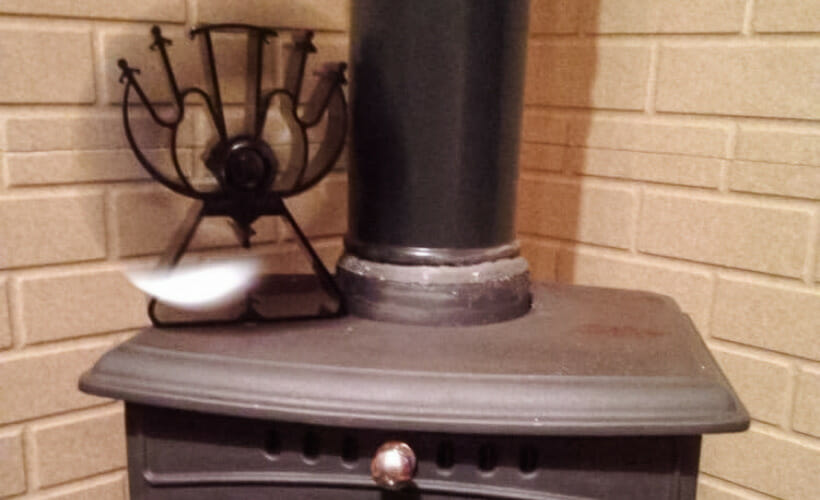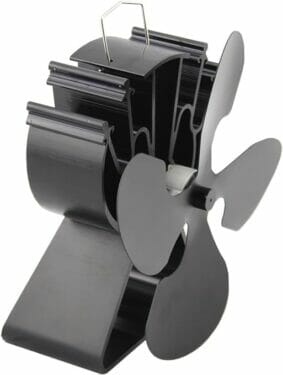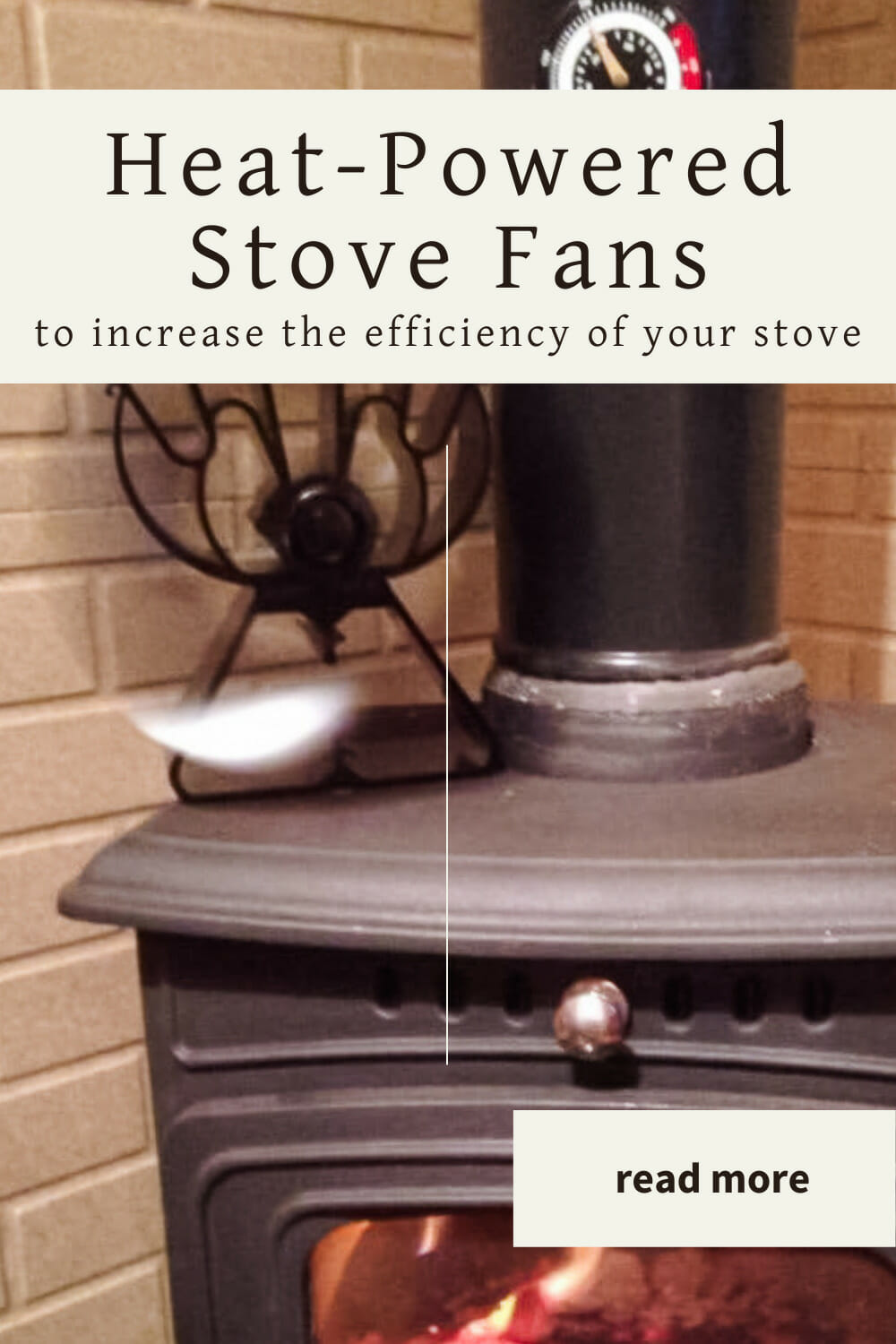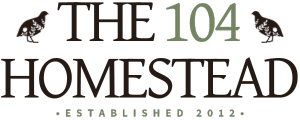Increase the Efficiency of Your Stove with Heat-Powered Fans
Increase the efficiency of your wood stove with heat-powered stove fans. Discover how these eco-friendly devices circulate warm air and reduce heating costs.

Imagine sitting by your wood stove, feeling the warmth and coziness of the room around you as the blazing fire dances in the wood stove glass. Pssst! I have tips for cleaning that stove glass and keeping it clean. However, as the evening wears on, you can’t help but notice that the heat isn’t circulating evenly around the room. All too often, those chilled pockets of air have you reaching for extra layers of clothing, trying to stay warm.
Would it be too much to ask for your wood stove to be able to heat the whole room?
Introducing the heat-powered wood stove fan – a revolutionary innovation designed to increase the efficiency of your wood stove. The fan circulates the hot air around the room, ensuring that the heat reaches every corner of your living space. This way, you can enjoy a stable warmth that evenly heats every inch of your abode.
How do heat-powered stove fans work?
Heat-powered stove fans are ingeniously designed devices that harness the power of heat to generate a gentle breeze that circulates the warm air throughout your living space. These fans are specifically engineered to work in harmony with your wood stove, utilizing the heat generated by the fire to make their own electricity.
The process is remarkably simple yet highly effective. As the temperature of the wood stove increases, the base of the heat-powered stove fan absorbs the heat through its metal fins. This heat is then transferred to a thermoelectric module at the base of the stove fan, also known as a Peltier element, which is located at the center of the fan. The Peltier element consists of two ceramic plates with a layer of semiconductor material in between.
When one side of the Peltier element is heated and the other side is cooled, a temperature differential is created, resulting in the production of electricity. This electricity powers a small electric motor, which in turn drives the fan blades. As the fan blades rotate, they draw in the cooler air from behind and force it forward, increasing the flow of warm air throughout the room.
The beauty of heat-powered stove fans lies in their self-sufficiency. They require no batteries or external power sources to operate—just the heat your wood-burning stove produces. This not only makes them environmentally friendly but also eliminates the need for any additional maintenance or running costs.
Will a heat-powered fan work in front of a fireplace?
If you’re the proud owner of a cozy fireplace or insert, you may be disappointed to learn that heat-powered fans are incompatible with such appliances. These fans require an elevated surface to draw heat up from the base – something that a fireplace mantle or insert can’t provide. Moreover, the fan’s design doesn’t allow it to be placed in front of a fireplace; the back of the fan must heat up in order to generate the necessary energy.
Benefits of Using Heat-Powered Stove Fans
One of the significant benefits of using heat-powered stove fans is their ability to improve the efficiency of your wood stove. By actively redistributing the heated air, these fans help eliminate cold spots and achieve a more even temperature throughout the room. This results in a more efficient use of heat, allowing you to get the most out of your wood stove and maximize its warming capabilities.
Another advantage of heat-powered stove fans is their silent and efficient operation. Thanks to advanced engineering, these fans are designed to work smoothly and quietly, ensuring that you can enjoy the warmth without any distracting noise. This silent operation creates a cozy and peaceful ambiance in your space, perfect for relaxing or focusing on other activities.
Heat-powered stove fans offer economic benefits. By improving the heat distribution, these fans help reduce heating costs. Instead of relying solely on the wood stove’s radiant heat, which tends to stay in one area, the fan ensures that the warmth circulates effectively throughout the room. This means that you can maintain a comfortable temperature using less firewood, ultimately saving you money on heating expenses.
Moreover, heat-powered stove fans are eco-friendly. With their efficient heat distribution, these fans reduce the need for excessive burning of wood, lowering your carbon footprint. By making your wood stove more efficient, these fans contribute to a greener, more sustainable heating solution, aligning with environmentally conscious practices.
Choosing the Right Heat-Powered Stove Fan
When it comes to choosing the right heat-powered stove fan for your wood stove, there are a few key factors to consider. Each fan has its own set of features and specifications that can greatly impact its performance and compatibility with your setup. By taking the time to understand these factors, you can make an informed decision that maximizes the efficiency of your wood stove.
Size of the Fan
One important consideration is the size and design of the fan. Different models vary in dimensions, so measuring the available space on top of your wood stove is crucial to ensure a proper fit. Additionally, you’ll want to consider the design of the fan blades. Opting for a fan with larger blades can help enhance air circulation, leading to better heat distribution throughout your space.
Temperature Activation Threshold
Another factor to keep in mind is the fan’s heat activation temperature. Heat-powered stove fans are designed to start working once they reach a specific minimum temperature. Choosing a fan with a heat activation temperature that aligns with your wood stove’s typical operating range is essential. This will ensure that the fan starts spinning at the right time to optimize heat distribution and efficiency.
Nice & Quiet Operation
Consider the noise level of the fan as well. While most heat-powered stove fans operate silently, some models may produce a faint humming sound. If you value a quiet environment, select a fan with noise-reducing features or one specifically marketed as silent.
Durability & Quality
Additionally, pay attention to the durability and build quality of the fan. Look for fans made from sturdy materials that can withstand the high temperatures generated by your wood stove. Stainless steel or aluminum construction is often a good choice, as these materials are known for their heat resistance and longevity.
Lastly, don’t forget to consider the brand reputation and customer reviews of the heat-powered stove fan you are interested in. Researching and reading the experiences of others can provide valuable insights into the performance and reliability of the fan.
Ecofan is the leader in heat-powered fans and offers an excellent warranty, but I find them a bit pricey. I have two of the VODA 4-Blade Thermoelectric Fans on my primary woodstove and one on my cookstove, and I love them. I’ve owned them for four years, and they’re still going strong (and I’ve dropped the cookstove one into the firebox a couple of times).

By keeping these factors in mind and assessing the specific requirements of your wood stove setup, you can confidently choose the heat-powered stove fan that suits your needs. In the next section, we will explore some tips for maximizing the efficiency of your wood stove, further enhancing its performance and effectiveness.
Maintaining Your Heat-Powered Fan
To keep a heat-powered stove fan running smoothly, regular maintenance is essential. Here are some tips:
- Dusting: Remove any dust or debris from the fan blades and other components using a soft brush or cloth. This will prevent the accumulation of dirt that can hinder the fan’s performance.
- Lubrication: Check the fan’s bearings or moving parts and lubricate them according to the manufacturer’s instructions. This helps to reduce friction and ensure smooth operation.
- Cleaning the Fins: Over time, the metal fins on the base of the fan may collect soot or ash, which can impact its heat absorption. Gently clean the fins with a soft brush or cloth to maintain their efficiency.
If your heat-powered stove fan becomes clogged or starts malfunctioning, follow these steps:
- Turn off the fan and let it cool down completely before attempting any repairs or troubleshooting.
- Inspect for obstruction. Check for any debris or blockage that might be obstructing the fan blades or air vents. Remove any obstructions carefully using a soft brush or cloth.
- Check the Peltier element. The Peltier element is a critical component of the fan. It may need to be replaced if it appears damaged or worn out. Contact the manufacturer for guidance or consider seeking professional help.
- Contact the manufacturer. If the fan continues to malfunction or if you are unsure about how to proceed, it’s best to contact the manufacturer for support or consult a professional technician. They will have the expertise to diagnose and resolve any issues with the fan.
Tips for Maximizing the Efficiency of Your Wood Stove
It’s important to maintain your wood stove properly. Regular cleaning is essential to remove any built-up ash or debris hindering airflow and reducing overall efficiency. Make sure to clean the stove’s interior, including the firebox, flue, and chimney, as well as the exterior components, such as the stovepipe and heat exchanger. This will not only improve the stove’s performance but also reduce the risk of chimney fires.
Using seasoned firewood is key to maximizing efficiency. Seasoned wood has been dried for at least six months, allowing it to reach a lower moisture content. Burning wet or unseasoned wood not only produces less heat but also creates more smoke and pollutants, which can negatively impact the performance of your stove and heat-powered fan. Investing in a moisture meter can help ensure that the wood you’re using is properly seasoned before it’s burned.
Another tip for optimizing your wood stove’s efficiency is to establish a consistent burn rate. It’s important to avoid overloading your stove with too much wood, as this can lead to excessive heat and wasteful combustion. Instead, aim for a steady and controlled burn by adding smaller amounts of wood at regular intervals. This not only helps maintain a more consistent temperature but also reduces the risk of smoldering or excessive creosote buildup.
Proper placement, if it’s not already in an established location, of your stove can significantly impact its efficiency. Ensure your stove is installed in a central location within your home, allowing the heat to distribute evenly throughout the space. Placing the stove against an exterior wall can result in heat loss, so consider using a heat shield on the wall behind the stove to reflect heat back into the room.
Lastly, utilizing a stove fan can greatly enhance the efficiency of your wood stove. As we discussed earlier, heat-powered stove fans can help distribute the warm air more effectively, reducing the need for additional heating sources. However, it’s important to position the fan correctly. Experiment with different placements on the stovetop to find the optimal spot that allows the fan to circulate the warm air efficiently.
By implementing these tips, you can make the most out of your wood stove and heat-powered stove fan. In the next section, we will delve into some additional considerations to ensure a safe and productive experience with your wood stove.
If you’ve found value in this blog post and enjoyed reading it, why not share it with your Pinterest community? Pin the image below and spread the love!

Incorporating a heat-powered stove fan into your wood stove setup is a smart investment that can revolutionize how you heat your home in an economical way. By effectively distributing heat and maximizing the efficiency of your heating system, these fans offer numerous benefits that go beyond just keeping you warm. As you’ve seen, their eco-friendly operation and cost-effectiveness make them a must-have for any wood stove owner.
What’s your go-to method for staying warm and cozy during the colder months? Have you ever tried using a heat-powered stove fan, or do you have any other tips for maximizing the efficiency of a wood-burning stove? Share your experiences and insights below!
